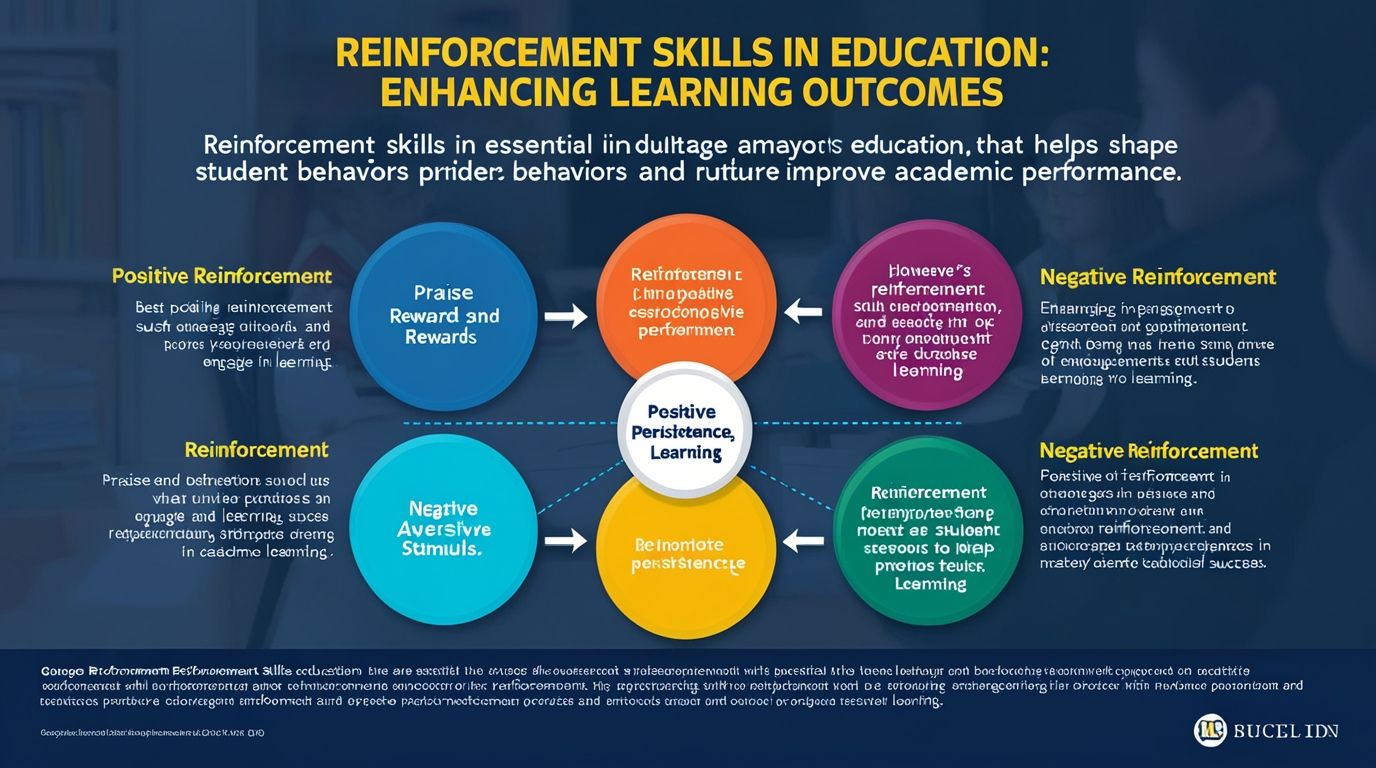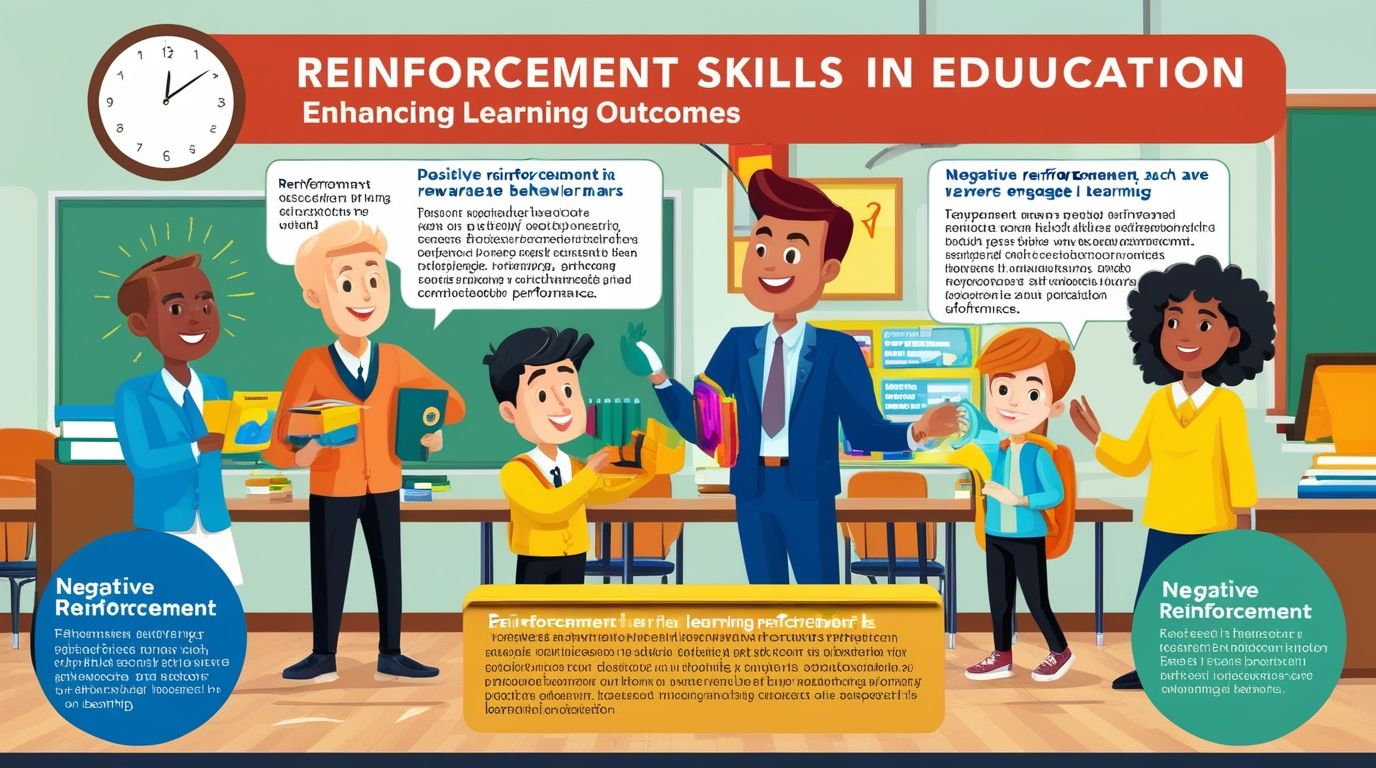Reinforcement Skills in Education Reinforcement is a foundational concept in education, rooted in behaviorist theory, particularly in the work of B.F. Skinner. It involves using rewards or consequences to increase the likelihood of a desired behavior being repeated. In the context of education, reinforcement skills are strategies that teachers use to encourage positive behaviors and academic performance among students. These skills are vital for creating a conducive learning environment, promoting student engagement, and achieving educational goals. This article explores the various types of reinforcement, their application in educational settings, and the impact they have on student learning and behavior.
Understanding Reinforcement
Reinforcement Skills in Education is a process that strengthens a behavior, making it more likely to occur in the future. It divided into two main categories: positive reinforcement and negative reinforcement. Both play critical roles in shaping student behavior and learning outcomes.
- Positive Reinforcement: This involves adding a rewarding stimulus after a desired behavior performed, increasing the likelihood of that behavior being repeated. For example, a teacher might praise a student for completing their homework, offer extra playtime, or give a sticker as a reward for good behavior.
- Negative Reinforcement: Unlike positive reinforcement, negative reinforcement involves removing an aversive stimulus after a desired behavior exhibited, thereby increasing the likelihood of the behavior being repeated. For instance, a teacher might allow a student to skip a difficult task once they demonstrate mastery of a particular skill, thereby encouraging further practice and improvement.

Types of Reinforcement in Education
Reinforcement Skills in Education can take various forms, each with its unique application and impact on student behavior and learning. Some of the most common types include:
- Verbal Praise: One of the simplest and most effective forms of positive reinforcement is verbal praise. Teachers use words of encouragement and recognition to reinforce desirable behaviors, such as participation, effort, and academic achievement. This type of reinforcement can boost students’ self-esteem, motivation, and engagement.
- Tangible Rewards: Tangible rewards, such as stickers, certificates, or small prizes, are often used to reinforce positive behaviors. These rewards provide a concrete acknowledgment of a student’s accomplishments, making the reinforcement more memorable and impactful.
- Token Economies: Token economies are a structured form of reinforcement where students earn tokens for displaying desired behaviors. These tokens can later exchanged for a reward. This system teaches students the value of delayed gratification and helps them develop self-regulation skills.
- Social Reinforcement: Social reinforcement involves the use of peer recognition and approval as a form of reinforcement. Group activities, collaborative projects, and peer evaluations can create a social environment where students motivated to meet behavioral and academic expectations to gain approval from their classmates.
- Activity Reinforcement: Also known as the Premack Principle, activity reinforcement allows students to engage in a preferred activity as a reward for completing a less preferred task. For example, a student might be allowed to play a game or participate in a fun activity after finishing their homework.
- Intrinsic Reinforcement: While extrinsic reinforcement involves external rewards, intrinsic reinforcement is about fostering internal satisfaction and motivation. Teachers can encourage intrinsic reinforcement by helping students find personal meaning and enjoyment in their learning activities, thereby making the learning process its own reward.
The Role of Reinforcement in Classroom Management
Reinforcement skills are essential for effective classroom management. They help teachers establish a positive learning environment where students motivated to behave appropriately and engage in academic tasks. Key aspects of reinforcement in classroom management include:
- Establishing Expectations: Reinforcement begins with clearly communicated expectations. Teachers must establish and consistently enforce rules and guidelines, ensuring that students understand the behaviors that will be reinforced.
- Consistency in Reinforcement: Consistency is crucial in reinforcement. Teachers need to apply reinforcement strategies consistently to ensure that students make the connection between their behavior and the outcomes. Inconsistent reinforcement can lead to confusion and undermine the effectiveness of reinforcement.
- Immediate Feedback: Providing immediate reinforcement after a desired behavior is critical in helping students associate their actions with positive outcomes. Immediate feedback helps in reinforcing the behavior while it is still fresh in the student’s mind.
- Differentiated Reinforcement: Not all students respond to the same types of reinforcement. Effective teachers use differentiated reinforcement strategies tailored to individual student needs, preferences, and learning styles. This personalized approach ensures that reinforcement is meaningful and effective for each student.
- Positive Reinforcement vs. Punishment: While reinforcement focuses on encouraging desired behaviors, punishment involves discouraging undesirable behaviors. Research suggests that positive reinforcement is more effective than punishment in promoting long-term behavior change. However, when used, punishment should applied carefully and consistently, with a focus on helping students learn from their mistakes.
Reinforcement and Academic Achievement
Reinforcement Skills in Education or Reinforcement skills not only influence student behavior but also have a significant impact on academic achievement. By reinforcing academic efforts and achievements, teachers can motivate students to strive for excellence and persevere through challenges. Here’s how reinforcement contributes to academic success:
- Encouraging Effort and Persistence: Positive reinforcement helps students develop a growth mindset, where they view effort as a path to mastery. By recognizing and rewarding effort, teachers can encourage students to take on challenges and persist in the face of difficulties.
- Building Confidence: Regular reinforcement of academic successes, no matter how small, builds students’ confidence in their abilities. This increased self-confidence can lead to greater participation, risk-taking in learning, and ultimately, higher academic performance.
- Enhancing Focus and Attention: Reinforcement strategies can be used to improve students’ focus and attention during lessons. For instance, a teacher might use a point system where students earn points for staying on task, which can later be redeemed for a reward. This encourages students to stay engaged and attentive during class.
- Promoting Mastery Learning: Reinforcement plays a critical role in mastery learning, where students are encouraged to achieve a high level of proficiency before moving on to more complex material. Teachers can use reinforcement to motivate students to practice and refine their skills until mastery is achieved.
- Reducing Academic Anxiety: Reinforcement strategies can help reduce academic anxiety by creating a supportive and positive learning environment. When students know that their efforts will be recognized and rewarded, they are more likely to approach their studies with confidence and less fear of failure.
Challenges and Limitations of Reinforcement
While reinforcement is a powerful tool in education, it is not without its challenges and limitations. Some of the potential issues include:
- Overreliance on Extrinsic Rewards: One of the main criticisms of reinforcement is that it can lead to an overreliance on extrinsic rewards, potentially undermining intrinsic motivation. If students become accustomed to receiving rewards for their efforts, they may lose interest in learning for its own sake.
- Inequity in Reinforcement: There is a risk of inequity in the application of reinforcement, where some students receive more recognition and rewards than others. This can create feelings of resentment or discouragement among students who may not be receiving reinforcement despite their efforts.
- Short-Term Effects: Reinforcement, particularly when used inconsistently or without a clear long-term strategy, may only produce short-term behavior change. For reinforcement to have lasting effects, it needs to be part of a broader educational approach that includes fostering intrinsic motivation and self-regulation.
- Potential for Manipulation: There is a risk that students may learn to manipulate the reinforcement system by only displaying desired behaviors when they know they will be rewarded. This can undermine the development of genuine, self-motivated behavior.
- Ethical Considerations: The use of reinforcement, particularly in the form of punishment or negative reinforcement, raises ethical concerns. Teachers must be careful to ensure that their reinforcement strategies are fair, respectful, and in the best interest of the student’s overall development.
Conclusion
Reinforcement Skills in Education Reinforcement skills are a critical component of effective teaching and classroom management. By understanding and applying the principles of reinforcement, teachers can create a positive learning environment that promotes desirable behaviors, enhances academic achievement, and supports student development. However, it is essential to balance reinforcement with strategies that foster intrinsic motivation and encourage students to take ownership of their learning. As education continues to evolve, the challenge for educators is to use reinforcement in a way that not only shapes behavior but also nurtures a lifelong love of learning.

3 thoughts on “Reinforcement Skills in Education”
Comments are closed.